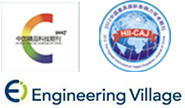Abstract:
The nickel-rich lithium transition metal oxide cathode is an ideal high-energy power battery material due to its high capacity and high working voltage. Its performance is mainly affected by the structure, morphology, particle size and other factors of its hydroxide precursor. The spherical hydroxide precursor with controllable morphology and size of primary grain and secondary particles is the key for the preparation of nickel-rich cathode materials with excellent electrochemical performance. During the precipitation and crystallization process of hydroxide precursor, the process parameters will affect the performance of the precursor, and its growth mecha-nism has guiding significance for regulating the precipitation and crystallization. This paper reviews the basic theories related to precipitation crystallization, then discusses the growth mechanism of precipitation crystallization for hydroxide precursors of nickel-rich cathode materials and the influence of precipitation reaction factors on the physical and chemical properties of hydroxide. At last, the precursors for the synthesis of nickel-rich cathode materials with special structures such as single crystal, radial and core-shell structures are introduced.


 下载:
下载: